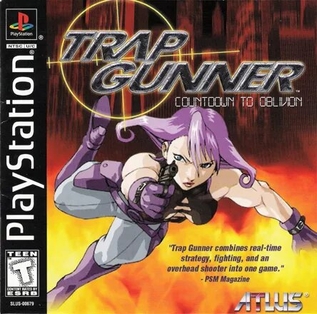Top Qs
Timeline
Chat
Perspective
Trap Gunner
1998 video game From Wikipedia, the free encyclopedia
Remove ads
Trap Gunner: Countdown to Oblivion, or just Trap Gunner (トラップガンナー, Torappu Gannā), known in Europe as Trap Runner, is a PlayStation video game published by Atlus in 1998, and by Konami in 1999. It is a strategy, arcade-style game for one or two players.
This article needs additional citations for verification. (May 2019) |
Remove ads
Gameplay
The purpose of the game to run around various levels and to set traps, which are invisible to your opponent. Players can shoot at one another while setting traps. Each character has a different melee weapon with unique attributes.
The story mode unveils each character's background and relation to the other characters.
Reception
Reception
The game received above-average reviews according to the review aggregation website GameRankings.[1] GamePro said, "Those who are searching for a good mix of real-time strategy and fighting will find that Trap Gunner fits the bill."[12][b] Next Generation called it "one of the season's sleeper hits."[10] In Japan, Famitsu gave it a score of 29 out of 40.[7]
Remove ads
Notes
- In Electronic Gaming Monthly's review of the game, one critic gave it a score of 7/10, another gave it 6/10, and the rest gave it each a score of 5/10.
References
External links
Wikiwand - on
Seamless Wikipedia browsing. On steroids.
Remove ads

